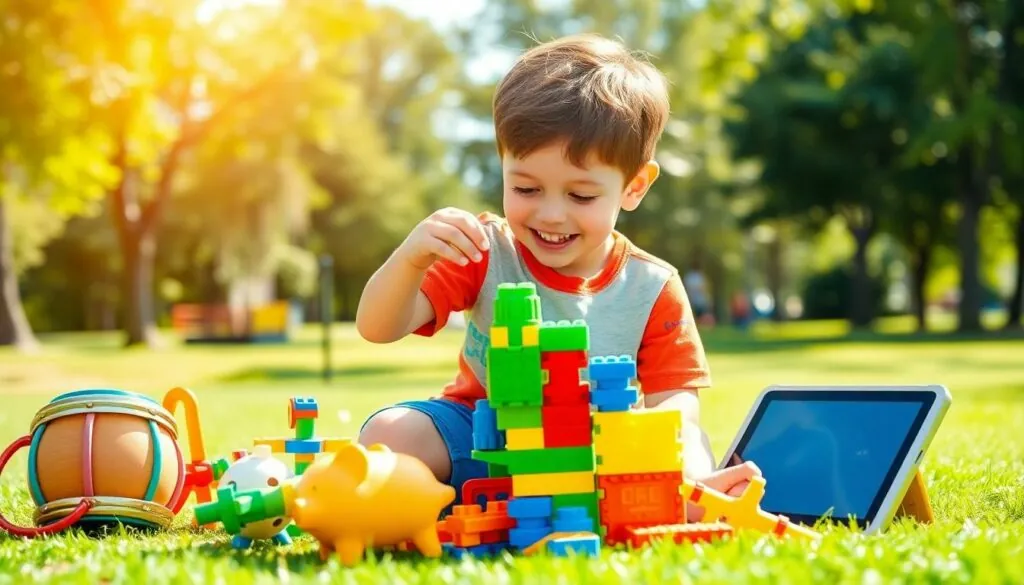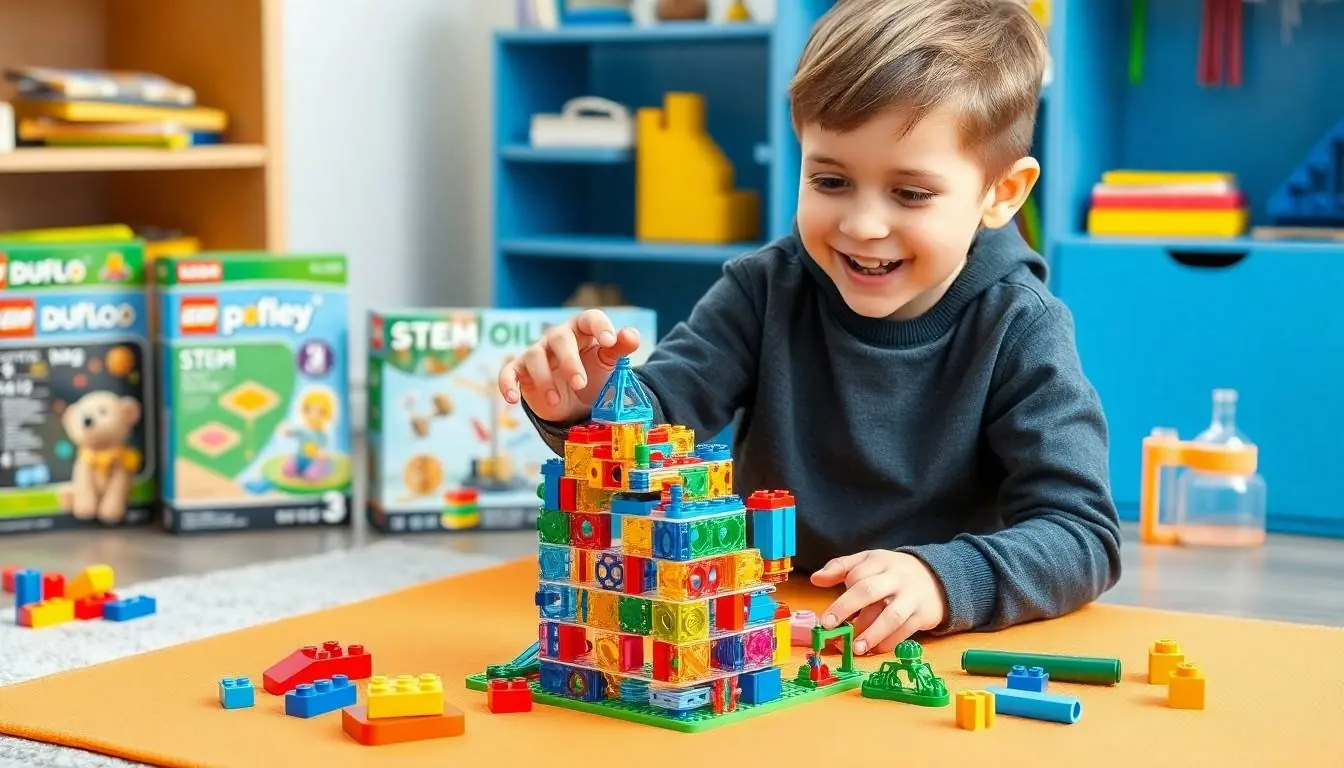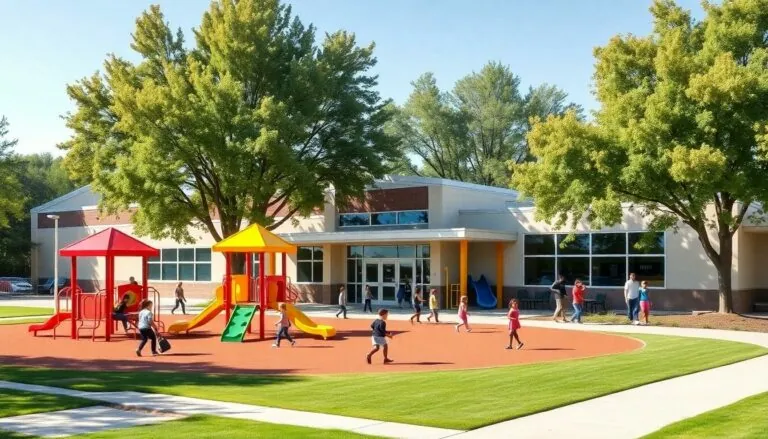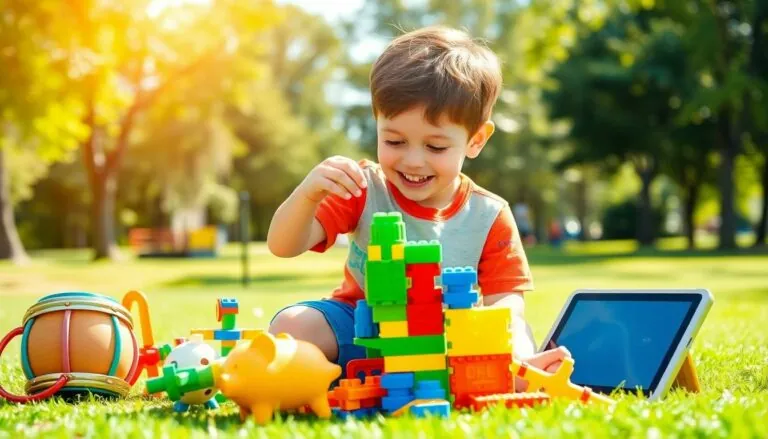Four-year-old boys are like tiny tornados of energy, curiosity, and endless questions. At this crucial age, they’re not just playing – they’re building the foundation for future learning through every block they stack and every puzzle they solve.
Finding the perfect educational toys for these energetic explorers can feel like trying to catch lightning in a bottle. But don’t worry! The right toys can transform ordinary playtime into powerful learning opportunities while keeping those active minds engaged and those busy hands occupied. From STEM-focused building sets to interactive learning tablets, today’s educational toys blend fun and learning in ways that would make even Einstein wish he was a preschooler again.
Table of Contents
ToggleUnderstanding the Developmental Needs of 4-Year-Old Boys
Four-year-old boys experience rapid development across multiple domains, making age-appropriate educational toys essential for their growth. These developmental milestones guide parents in selecting toys that maximize learning potential.
Physical and Motor Skills Development
Four-year-old boys demonstrate increased control over their gross motor movements through running, jumping, hopping on one foot, catching balls, and climbing. Their fine motor skills develop through activities like holding crayons, cutting with safety scissors, and manipulating small objects. Educational toys supporting physical development include:
- Building blocks for hand-eye coordination
- Lacing cards to enhance finger dexterity
- Play dough sets for strengthening hand muscles
- Ride-on toys for balance development
- Sports equipment sized for preschoolers
Cognitive and Problem-Solving Growth
- Pattern matching games with 12-15 pieces
- Number puzzles featuring quantities 1-10
- Memory cards with familiar objects
- Shape sorters with 8-10 geometric forms
- Construction sets with 20-30 pieces
| Developmental Area | Key Skills at Age 4 | Recommended Toy Features |
|---|---|---|
| Physical Skills | Jumps 24-33 inches | Large muscle activities |
| Fine Motor | Uses scissors | Small piece manipulation |
| Cognitive | Counts to 10 | Sequential patterns |
| Problem-solving | Completes 12-piece puzzles | Multi-step challenges |
Best STEM Toys for Preschool Learning
STEM toys introduce foundational concepts in science, technology, engineering & mathematics through hands-on exploration. These educational tools create early connections to complex subjects while maintaining playful engagement for 4-year-old boys.
Building Blocks and Construction Sets
Magnetic building tiles enhance spatial awareness through geometric shape combinations that stick together to form 3D structures. LEGO DUPLO sets feature large, colorful blocks designed for small hands to practice fine motor control while creating vehicles, buildings & animals. Advanced building sets like Bristle Blocks introduce texture exploration & creative problem-solving through their interlocking design. Construction toys develop:
- Engineering concepts through structural stability testing
- Mathematical skills via shape sorting & pattern recognition
- Problem-solving abilities when following build instructions
- Fine motor coordination from manipulating different pieces
- Spatial reasoning through 3D object creation
Science Experiment Kits
Age-appropriate science kits spark curiosity through safe hands-on experiments. Primary Science Lab Sets include real tools like magnifying glasses, test tubes & measuring cups scaled for preschool hands. Popular experiments feature:
- Color mixing with primary colored water
- Growing crystals in observation jars
- Making bubbles with different solutions
- Exploring magnetism with basic magnets
- Creating simple chemical reactions
These kits introduce:
- Basic scientific method concepts
- Cause & effect relationships
- Observation & prediction skills
- Safe laboratory practices
- Documentation through drawing results
The experiments use non-toxic materials & require adult supervision while maintaining educational value through repeatable activities.
Creative and Artistic Educational Toys
Creative expression through art and music enhances cognitive development while fostering imagination in 4-year-old boys. These activities strengthen fine motor skills and promote sensory exploration essential for early childhood development.
Art Supplies and Craft Kits
Art supplies empower young boys to express creativity through color exploration and tactile sensations. Essential supplies include chunky crayons, washable markers, finger paint sets, playdough, and safety scissors. Craft kits with large beads, stickers, and construction paper develop hand-eye coordination and spatial awareness. Structured activity sets like Paint by Numbers or My First Origami guide creative learning while building focus and patience. Kid-sized easels with paint storage encourage proper posture and artistic confidence. Mess-free coloring sets with water-activated markers protect furniture while allowing unrestricted creative exploration.
Musical Instruments
Musical toys introduce rhythm, melody, and sound exploration to developing minds. Age-appropriate instruments include xylophones with color-coded keys, junior drum sets, tambourines, and maracas. Electronic keyboards with pre-programmed melodies teach basic music concepts through interactive play. Rhythm sets combining multiple percussion instruments encourage exploration of different sounds and textures. Educational music sets featuring animal sounds connect familiar concepts with musical learning. Durable plastic instruments withstand active play while producing quality sounds. Musical toys with LED lights enhance sensory engagement and maintain attention during practice sessions.
Language and Social Development Toys
Language and social development toys enhance communication skills while fostering meaningful interactions with peers and adults. These toys create opportunities for vocabulary expansion storytelling abilities social awareness.
Interactive Books and Storytelling Sets
Interactive books engage 4-year-old boys through touch-activated sounds character voices lift-the-flap features. Popular options include:
- Electronic story readers with built-in vocabulary games
- Magnetic storyboards for creating custom narratives
- Touch-and-feel books featuring different textures materials
- Picture-word association books with audio pronunciation
- Recording devices that capture children’s storytelling attempts
Audio-enabled books help children associate written words with spoken language improving early literacy skills. Learning tablets with interactive storybook apps provide customized reading experiences that adapt to individual progress levels.
Role-Playing and Pretend Play Sets
Role-playing toys encourage social interaction imagination development through creative scenarios. Essential pretend play items include:
- Doctor kits with toy medical instruments stethoscopes
- Construction worker sets with plastic tools helmets
- Kitchen playsets with cooking utensils play food
- Dress-up costumes representing community helpers
- Cash register sets for practicing basic commerce concepts
These toys promote verbal communication by creating scenarios for dialogue exchange. Children learn turn-taking skills social cues emotional recognition through collaborative play experiences. Themed playsets spark conversations about different professions community roles daily activities.
| Type of Play Set | Skills Developed |
|---|---|
| Doctor Kit | Empathy, Communication |
| Construction Set | Problem-solving, Teamwork |
| Kitchen Set | Language, Social Interaction |
| Dress-up Costumes | Self-expression, Role Understanding |
| Shopping Set | Number Recognition, Social Exchange |
Screen-Free Learning Games and Puzzles
Traditional hands-on games enhance cognitive development through tactile exploration. These educational tools strengthen critical thinking without relying on digital devices.
Memory and Matching Games
Memory games strengthen concentration abilities through pattern recognition activities. Classic card matching games feature colorful animals or vehicles that capture young boys’ attention while building visual discrimination skills. Sequence memory games with shapes or colors help develop recall abilities essential for early math concepts. Picture dominoes introduce basic counting while encouraging strategic thinking through matching activities. Popular options include:
- Wooden pattern blocks with design cards for spatial recognition
- Large-format memory cards featuring transportation themes
- Color sorting games with manipulative pieces
- Sound matching cylinders for auditory development
- Picture sequencing cards that tell simple stories
Problem-Solving Puzzles
- Shape sorting cubes with geometric pieces
- Wooden jigsaw puzzles featuring favorite characters
- Patterning boards with colorful pegs
- Basic logic games with sliding pieces
- Stacking puzzles that teach size gradation
- Magnetic maze boards for fine motor control
| Puzzle Type | Recommended Piece Count | Skills Developed |
|---|---|---|
| Jigsaw | 12-24 pieces | Spatial awareness |
| Pattern | 8-12 shapes | Logic sequencing |
| Shape Sort | 6-8 shapes | Form recognition |
| Maze | Single path | Problem-solving |
Outdoor Educational Toys
Outdoor educational toys combine physical activity with learning opportunities for 4-year-old boys. These toys enhance gross motor skills while introducing scientific concepts through hands-on exploration.
Nature Exploration Tools
Nature exploration kits equip young boys with tools to discover the natural world. Magnifying glasses reveal tiny details in leaves, insects, rocks while child-sized binoculars bring distant objects into focus. Bug catching kits with ventilated containers encourage safe observation of insects, fostering early scientific inquiry. Weather stations teach basic meteorology concepts through rain gauges, wind vanes, thermometers. Garden tool sets with real working implements help children learn about plant growth cycles, soil properties, environmental science.
Active Learning Equipment
Balance bikes develop coordination, spatial awareness through self-propelled movement. Climbing domes feature geometric shapes that teach mathematical concepts during physical play. Jump ropes with counting beads combine number recognition with cardiovascular exercise. Ball games using colored targets enhance hand-eye coordination while teaching color recognition patterns. Sand play equipment introduces volume measurement concepts through scooping, pouring, building activities. Water tables demonstrate basic physics principles like flow, buoyancy through interactive experiments.
Conclusion
Educational toys play a vital role in shaping the development of four-year-old boys. The right combination of STEM toys learning games and creative playthings can create an enriching environment that supports their physical cognitive and social growth.
Parents who choose toys that align with their child’s developmental stage while incorporating elements of fun and discovery will find their little ones naturally drawn to learning. Whether it’s building blocks science kits or outdoor exploration tools these educational toys lay the groundwork for lifelong learning enthusiasm.
The key is selecting toys that grow with the child providing new challenges and learning opportunities as they develop. With thoughtful toy selection parents can transform everyday play into meaningful educational experiences that’ll benefit their children for years to come.






